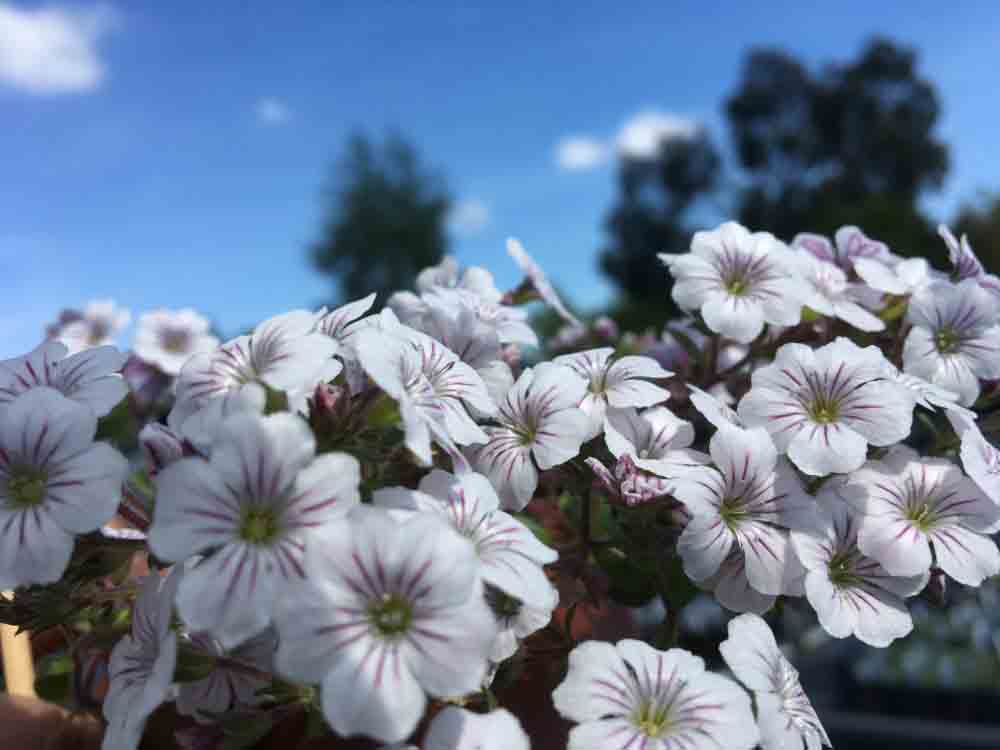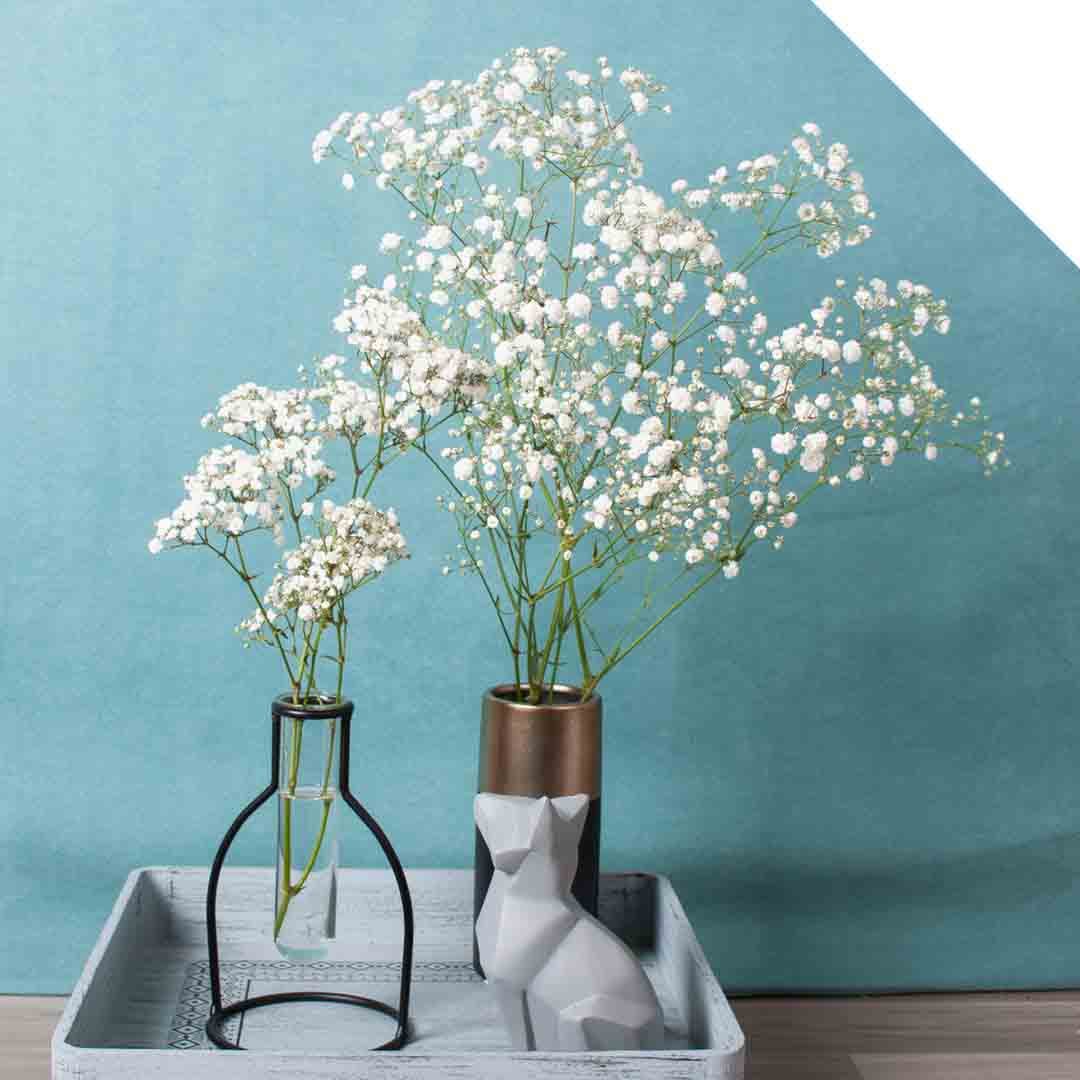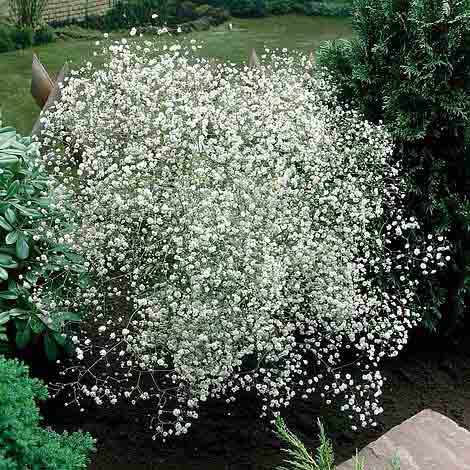Gypsophila Profile
Written by admin
Nov 03 2020

Gypsophila is a perennial herb of the Caryophyllaceae family and the genus Stone Flower. Its roots are strong. The stem is solitary, erect, and much branched. The leaf blades are lanceolate or linear-lanceolate, the top is gradually pointed, and the midrib is obvious. The paniculate cyme is multi-branched, and the flowers are small and many. The pedicel of the gypsophila is slender, the bracts are triangular, the calyx is broadly bell-shaped, the petals are white or light red, and the spoon-shaped. The capsule is spherical, with small seeds and round. The flowering period of gypsophila is generally from June to August, and the fruiting period is from August to September.
Gypsophila morphological characteristicsGypsophila efficacy and roleThe ornamental value of gypsophilaThe medicinal value of gypsophilaGypsophila growth habit and growing environment and distributionGypsophila cultivation
Gypsophila is produced in Asia, China, Russia, Mongolia; Europe; North America.

Gypsophila morphological characteristics
Gypsophila is a perennial herb, 30-80 cm high. The root is strong. The stem is solitary, sparsely clustered, erect, multi-branched, glabrous or glandular-hairy. Its leaf blade is lanceolate or linear-lanceolate, 2-5 cm long and 2.5-7 mm wide, with an acuminate tip and conspicuous midrib.
Gypsophila efficacy and role
The ornamental value of gypsophila

The medicinal value of gypsophila
The roots and stems of gypsophila can be used for medicinal purposes. It is a diuretic, relieves phlegm and relieves cough. It can also be used for acute jaundice hepatitis, acute nephritis, pertussis, urinary tract stones, athlete's foot, herpes zoster, and conjunctivitis.Gypsophila growth habit and growing environment and distribution

Gypsophila is mainly distributed in China (the Altai Mountains in Xinjiang, Taxkorgan), Kazakhstan, Russia (Siberia), Mongolia (West), Europe (West, Central and East) and North America.
Gypsophila cultivation
Gypsophila can be reproduced by cuttings. From the end of August to late April of the next year, from the sturdy gypsophila mother plant when the flower stems are not elongated, the ones with 4-5 knots on the leaves Use lateral buds as cuttings, remove 2-3 pairs of leaves at the base, and leave 3-4 pairs of leaves on the upper part. You’d better use indolebutyric acid with a concentration of 500 parts per million to quickly dip the cuttings in 1:1 perlite and rice husk smoked soil. Cuttings on the seedbed of the substrate. The row spacing of gypsophila is 3×3 cm. After cutting, it should be properly shaded, with a shading degree of 30%-50%, and frequent spraying is required to maintain the high air humidity. The temperature is generally maintained at about 20°C, and roots can take place in 25-30 days.Latest Updated
- Benefits of Bugleweed - 7 Science-backed Health Benefits
- Bugleweed Dangers & Side Effects - Is It Poisonous?
- How to Plant Evergreen Trees - What You Should Know
- When to Plant Evergreens - Grow Guide for Evergreen Trees
- 12 Wonderful Evergreen Shrubs for Your Garden
- 12 Popular Evergreen Plants with Pictures for Beginners
- When And How To Prune A Lilac Bush Like a Pro
- How to Grow & Care for Lilac Vine (Hardenbergia Violacea)
- Japanese Lilac Tree (Syringa Reticulata) Care & Propagation Guide
- Shumard Oak Pros and Cons - What to Know
Popular Articles
- Winter maintenance of Antirrhinum Majus
- How to Grow Terminalia Mantaly Tree
- How to Grow and Care for Crossostephium Chinense
- How to grow Antirrhinum Majus in spring
- Peristeria Elata (Dove Orchid) Profile: Info & Care Guide
- Underwatered Snake Plant (Sansevieria Trifasciata) - Signs And How To Fix
- How to Care for Brazilian Jasmine Plant (Mandevilla Sanderi)
- How to Grow & Care for Graptopetalum Purple Delight in Summer
- Rosa Chinensis (China Rose): Plant Growing & Care Tips
- How to Care for Baby Sun Rose (Aptenia Cordifolia)